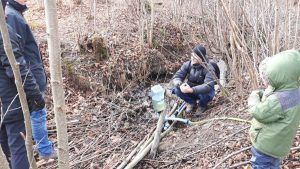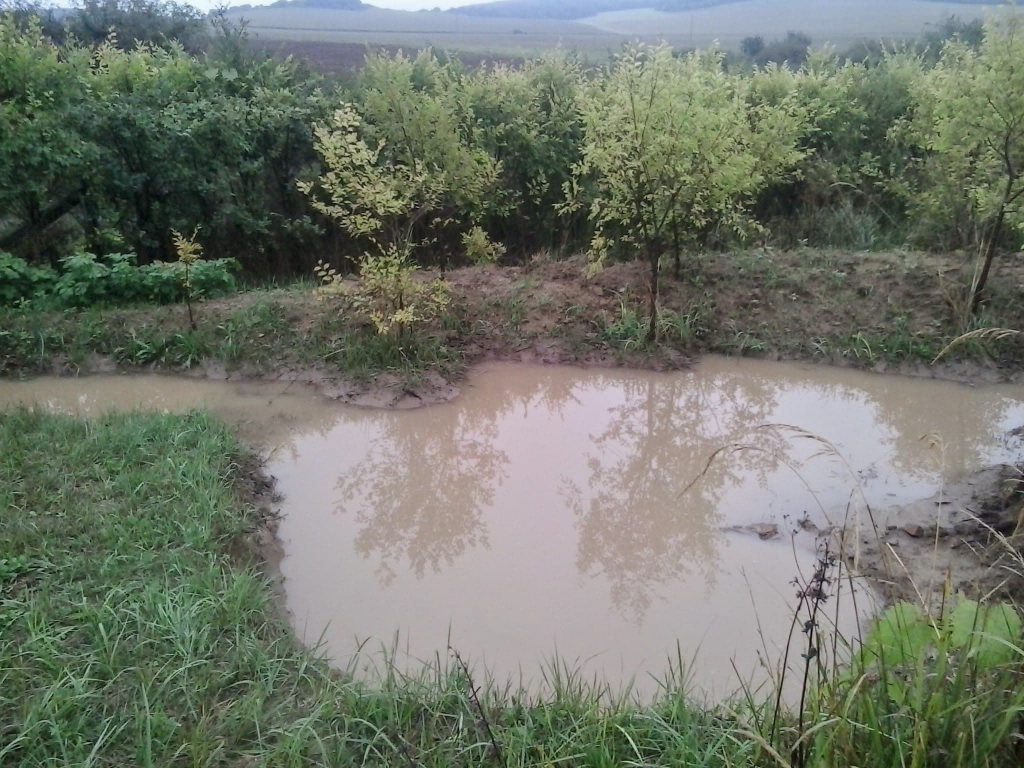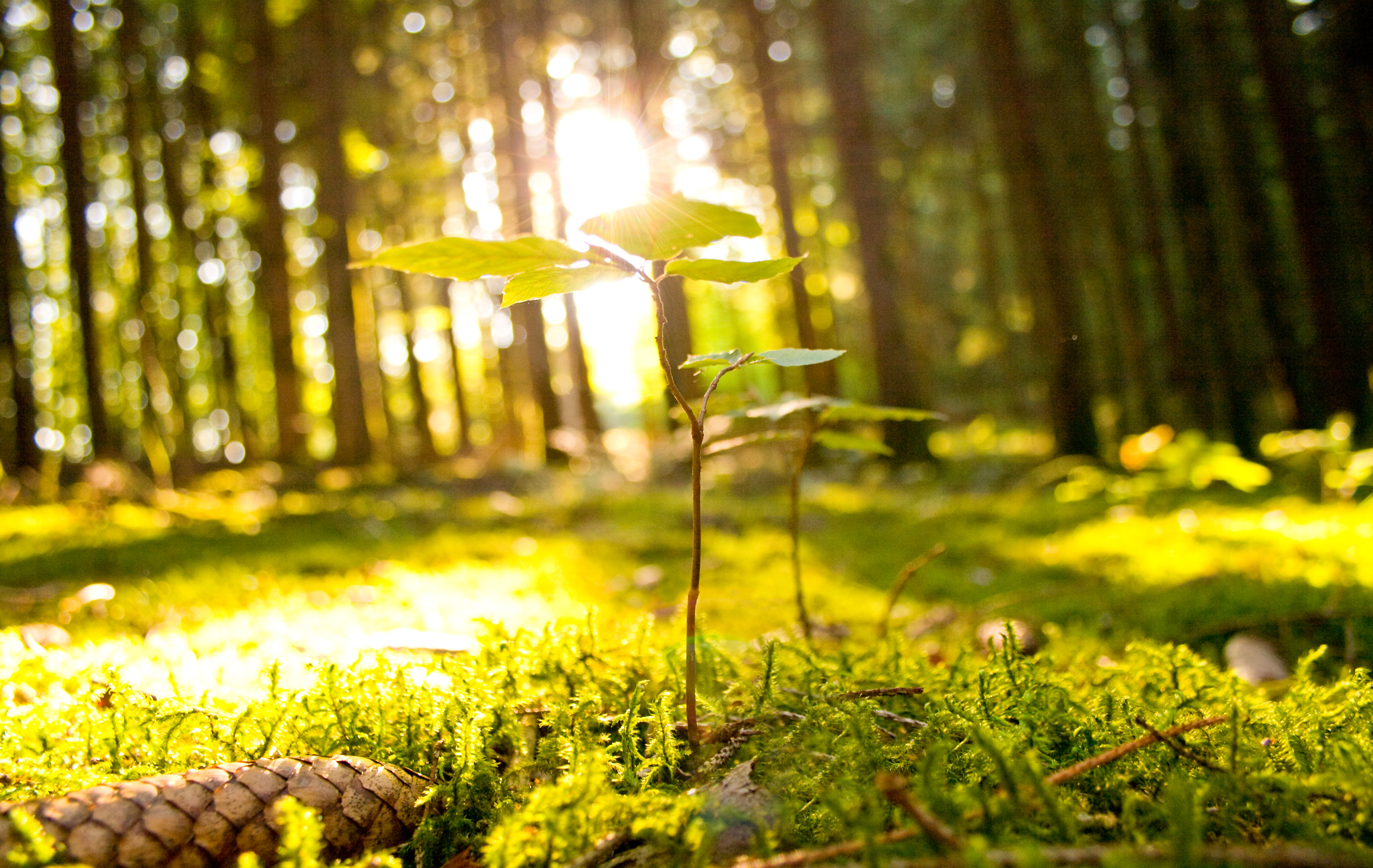
Water resilience – Visegrad project 2019
Our environment is progressively getting degraded because of over-exploitation of natural resources. In a degraded landscape with little or no tree cover, and subsequently little soil cover, rainwater is not able to percolate into the ground. We lose rich top soil with this running water, which flows away into the streams. It is a vicious cycle — no top soil, no vegetation, increased run off of water and further erosion of top soil – exacerbated by climate crisis resulting either in prolonged drought periods or sudden floods.
Well-designed water harvesting earthworks such as rainwater harvesting on roofs, ditches, ponds, swales and dams are the most effective way to channel water into productive use. The result can be increased food production, higher groundwater levels, reduced irrigation needs, reforestation and enhanced ecosystem resilience. These earthworks help to restore hydrological cycles with specific land-use techniques and biological resources, creating water security for people along with renewed viability for ecosystems.
Water
Resilience Project
We have started a water resilience project in 2019 thanks to the financial support of Visegrad Fund. We offered a unique, practical, 5-day Water Earthworks workshop, in autumn 2019 that showed the main techniques that can be applied to conserve water and build soil on landscape level (rainwater collection and storage, pond, swale and earth dams construction). Selected partners from each of the Visegrad countries were invited to learn about water retention techniques and spread the knowledge in their respective countries about water earthworks, along with few other participants (mostly farmers) from nearby countries. They learnt to understand the principles of permaculture design in earthworks: reading the site, interpreting contour maps and using surveying tools. The course had a strong practical component – we rented a digger and made a real pond.

After the workshop, we keylined about one hectare of land with a subsoiler to prepare the ground for tree plantation and make the land drought-proof (about the technique of keylining see at the end of this post).
After the workshop, we keylined about one hectare of land with a subsoiler to prepare the ground for tree plantation and make the land drought-proof (about the technique of keylining see at the end of this post).
A water resilient, edible forest with 14 species, mostly nut species, were planted on an infertile area with about hundred fifty people, most of them children on a beautiful autumn Saturday. Participants got to know diverse edible tree species, the proper way of planting trees. Besides, children as well as adults were offered workshops during this event about different water conservation and irrigation techniques.
Here you can see how our autumn plantation day, filled with workshops and artistic shows for kids looked like.

Below you can find more information about the water workshop (our partners, lead teacher and the main content) and the different water harvesting measures implemented during this project. If you are interested to learn more about the main water retention measures, click here.
Project Partners
Harmony of Culture Foundation from Poland
Zengő-Mozgó Egyesület from Hungary
Ranch Srbsko, s.r.o. from Czech Republic
The Society for the Sustainable Culture (STRUK) from Slovakia.

Content of Water Retention Workshop
- Discussion on the connection between the water cycles and climate change; principles of and technical solution to water retention in landscapes and in small water cycles;
- Calculation of rainwater runoff from land to design the most effective solutions to water retention;
- Designing creative retention measures at the landscape level;
- Check dams; Pond and Swale – how to do them; topography analysis; soil absorption capacities analysis; landscape preservation and design;
- Surveying pond and marking out spillway and swale;
- Building of a rainwater retention pond with spillway;
- Constructing check dams;
- Building of a swale;
- Evening discussions, workshops and films.
About the main teacher: Michal Kravčík
Michal is an experienced Slovak water management engineer, hydrologist and environmentalist. He was awarded the Goldman Environmental Prize in 1999, for his contributions to the water management of the Torysa River. He also worked several years at the Slovak Academy of Sciences. He promotes ecological solutions for integrated river basin management and landscape restoration. Michal Kravčík had published numerous works, including “New Water Paradigm – Water for the Recovery of Climate” in 2007. He is a founding member and Chairman of an NGO called People and Water. For many many years he has been organizing summer courses on water retention in Slovakia. More information about his work: https://www.theflowpartnership.org/people-and-water
Water retention measures implemented during this project
+++++++ POLAND +++++++

After having measured the water catchment area for the desired pond and connecting swale, we calculated a suitable pond size. The pond was to be digged below a wetland area at the bottom of a slopy area, which is situated just below a forested hill. Because the hill is filled with rocks, hardly any runoff occurs from this area, thus we deducted it from the catchment area.

A diversion swale (85m) was designed to catch all runoff from the above slopy area and gently move it towards the pond.
The pond was created with a 9-tonne digger in two days and with the help of all participants during the water workshop. After 2 months, the pond is slowly filling up.


Above the swale, the catchment area has been subsoiled on a keyline pattern. This is another water conservation technique that helps the slowing and better distribution of water runoff over land, improving soil moisture. Subsoiling also minimizes soil compaction issues and allows new seedling roots to proliferate to greater depths. Once this was done, and tree seedlings arrived, more than 100 people planted out 17 species of edible trees. Below is the design that was prepared for a water resilient edible forest landscape.


We also created – thanks to the help of our Hungarian partners – a Ram Pump, which runs without electricity or fuel, just using gravity. Unbelievable, but it works: we have pumped up water 8m high with this wonderful technique using only the energy of water flow.
++++++++ Czech Republic +++++++
Shortly after returning to the Czech Republic with knowledge from the water resilience course, two ponds and a swale were constructed at Ranch Srbsko. The designs are based on best practices as described in the course, including how to calculate the catchment area, how to size the water impoundment, how to use tools such as a laser level to ensure stability and safety of the final earthworks, and how to restore and regrow the landscape quickly and effectively. The first pond has a catchment area of ~7 hectares, and the second pond has a catchment area of ~ 2.5 hectares (see pictures and illustrations below).





++++++++ Hungary +++++++
The essence of water strategy developed on our Hungarian partners’ site is to ensure conditions so that the soil or mulch holds as much water as possible in order to avoid/decrease runoff of water (there are no barren, plowed areas instead either live vegetation or mulch). As the annual rainfall distribution is increasingly rhapsodic, we expect that even during the vegetation period we will not be able to provide enough water in intensively cultivated areas, and therefore large amounts of water storage and irrigation are required. Therefore we decided to use gutters, cisterns, tanks, construct some water retention ponds and swales for storage. The water that runs down the property’s paths have been trapped and led to cultivated areas where possible. We planted trees in autumn 2019 to further reduce evaporation.


One small retention pond connected to a swale 
Another retention pond
++++++++ Slovakia +++++++
The project’s Slovakian NGO partner, STRUK is placed at the farm Pavlovskeho Stajain Hrusov in Southern Slovakia, which is a very hot and dry place. Therefore we are very keen in studying and practicing different water managing systems and we also teach a lot about working with water at permaculture courses and the farm is the practical example how to use water elements and systems in practise. We have used keyline design on own land and created few swales and prepared damps for creating ponds for animals such a ducks, pigs.

Until now, the damps were able to catch water already slowed down the runoff. Whereas before, they had huge problems with water that was running downhill on the road creating enormous erosion, now, the water stays on the property and is used for animals and recently planted trees. They are planning to create underground water reservoirs for catching the rain water from roofs of the farm buildings for watering vegetable gardens. Within the future plans are also the continued implementation of keyline design system on the upper fields.
In November 2019, the Slovakian representative of our partner NGO (STRUK) – after returning home from the water workshop – implemented another pond designed for irrigation during the dry summer months. Here you can see the process of how it was made.






